Field Measurements of Indoor Environmental Quality in School Buildings Post-COVID-19: Systematic Review
Abstract
1. Introduction
1.1. Background
- Enhanced ventilation requirements and monitoring strategies.
- The integration of real-time measurement systems.
- Consideration of parameter interactions.
- The implementation of comprehensive assessment protocols.
1.2. Rationale
1.3. Objectives
- To systematically analyze field studies conducting comprehensive IEQ measurements in school classrooms (2020–2024).
- To identify correlations between different IEQ parameters and their implications for classroom environment management.
- To evaluate post-COVID-19 modifications in measurement and monitoring approaches.
- To develop evidence–based recommendations for IEQ optimization in educational settings.
2. Methods
2.1. Protocol and Registration
2.2. Eligibility Criteria
2.2.1. Inclusion Criteria
- Published between January 2020 and January 2024.
- Field measurements conducted in school classroom settings.
- Comprehensive measurement of all four IEQ parameters:
- –
- Thermal comfort;
- –
- Indoor air quality;
- –
- Acoustics;
- –
- Lighting.
- Peer-reviewed journal articles.
- Published in English.
- Primary data collection studies.
2.2.2. Exclusion Criteria
- Simulation studies without field measurements.
- Studies measuring fewer than all four IEQ parameters.
- Review articles, conference proceedings, or non-peer-reviewed publications.
- Studies conducted outside educational settings.
- Theoretical or methodological papers without empirical data.
2.3. Information Sources
- Scopus.
- Web of Science.
- Science Direct.
- PubMed.
2.4. Search Strategy
Search String Development
- Indoor environmental quality and related terms.
- School/classroom settings.
- Measurement/monitoring terminology.
- Specific IEQ parameters.
- ("Indoor Environmental Quality" OR IEQ)
- AND
- (school* OR classroom*)
- AND
- (measur* OR monitor* OR assess*)
- AND
- ("thermal comfort" OR temperature)
- AND
- ("air quality" OR IAQ OR CO2)
- AND
- (acoustic* OR noise)
- AND
- (light* OR visual OR illumin*)
- AND
- PUBYEAR > 2019
2.5. Selection Process
- Initial Screening: Two independent reviewers screened titles and abstracts against the predefined eligibility criteria. Discrepancies were resolved through discussion or consultation with a third reviewer.
- Full-text Review: The full texts of potentially eligible studies were independently assessed by two reviewers using a standardized form.
2.6. Data Collection Process
2.6.1. Data Extraction Tool
- Study characteristics (authors, year, country, school type).
- Measurement protocols and equipment specifications.
- IEQ parameters and measurement methodologies.
- Key findings and statistical analyses.
- Quality assessment criteria.
2.6.2. Data Extraction Process
2.7. Data Items
2.7.1. Study Characteristics
- Publication details (authors, year, journal).
- Study location and setting.
- School type and level.
- Sample size (number of classrooms).
- Study duration and timing.
2.7.2. Measurement Parameters
- Thermal comfort parameters:
- –
- Air temperature (°C).
- –
- Relative humidity (%).
- –
- Air velocity (m s−1).
- –
- PMV/PPD values (where available).
- Indoor air quality parameters:
- –
- CO2 concentration (ppm).
- –
- Particulate matter (PM2.5, PM10).
- –
- Ventilation rates.
- –
- Other pollutants (where measured).
- Acoustic parameters:
- –
- Background noise level (dBA).
- –
- Reverberation time (s).
- –
- Speech transmission index (where measured).
- Lighting parameters:
- –
- Illuminance (lux).
- –
- Luminance (cd m−2).
- –
- Daylight factor (%).
- –
- Uniformity ratio.
2.8. Quality Assessment
2.8.1. Quality Criteria
- Measurement methodology robustness.
- Equipment calibration and accuracy.
- Sampling strategy appropriateness.
- Data analysis methods.
- Completeness of reporting.
2.8.2. Quality Scoring
- Methodology (0–8 points).
- Data collection (0–6 points).
- Analysis and reporting (0–6 points).
2.9. Data Synthesis
2.9.1. Quantitative Synthesis
- Statistical analysis of measurement ranges.
- Correlation analysis between parameters.
- Meta-analysis where appropriate.
2.9.2. Qualitative Synthesis
- Narrative synthesis of measurement approaches.
- Thematic analysis of methodological developments.
- Assessment of post-COVID-19 modifications.
3. Results
3.1. Study Selection
3.2. Study Characteristics
3.2.1. Temporal Distribution
- 2020: 12 studies.
- 2021: 16 studies.
- 2022: 15 studies.
- 2023: 19 studies.
- 2024: 8 studies.
3.2.2. Geographical Distribution
- Spain: 15.83%.
- Malaysia: 11.87%.
- USA: 11.86%.
- Italy: 9.91%.
- Japan: 9.91%.
- China: 7.91%.
- UK: 7.05%.
- Australia: 5.95%.
- Portugal: 5.89%.
- Turkey: 5.89%.
- Denmark: 3.94%.
- France: 3.94%.
3.2.3. Measurement Parameters
- Thermal Comfort: 69 studies (98.6%).
- Indoor Air Quality: 66 studies (94.3%).
- Relative Humidity: 65 studies (92.9%).
- Visual Comfort: 56 studies (80%).
- Air Velocity: 52 studies (74.3%).
- Acoustic Comfort: 47 studies (67.1%).
3.2.4. Type of School
3.3. Parameter Correlations
3.3.1. Thermal-IAQ Correlations
3.3.2. Ventilation–Acoustic Relationships
3.3.3. Lighting Interactions
3.4. Post-COVID-19 Modifications
3.4.1. Ventilation Strategies
- Increased air exchange rates: +30% (average).
- Lower CO2 thresholds: 800 ppm (median).
- Enhanced filtration requirements [79]: MERV-13+ (86% of studies).
- Energy consumption [80].
- Acoustic environment.
- Thermal comfort maintenance.
3.4.2. Monitoring Approaches
- Real-time monitoring: 41.4% of studies.
- Multi-parameter integration: 24.2% of studies.
- Remote monitoring capabilities: 34.2% of studies.
4. Discussion
4.1. Main Findings
4.2. Parameter Interactions
4.2.1. Thermal Comfort and Indoor Air Quality (IAQ)
4.2.2. Acoustic Comfort and Ventilation
4.2.3. Lighting and Visual Comfort
4.2.4. Interactions Between Humidity and Air Velocity
4.3. Implications for Practice
4.3.1. Design Recommendations
- The integration of hybrid ventilation systems.
- The implementation of multi-parameter monitoring.
- Consideration of seasonal adaptability.
4.3.2. Operational Guidelines
- The regular calibration of monitoring systems.
- The dynamic adjustment of ventilation rates.
- A balanced approach to parameter optimization.
4.4. Research Gaps
4.4.1. Methodological Gaps
- The long-term effectiveness of modified ventilation strategies.
- Cost–benefit analysis of integrated monitoring systems.
- The standardization of measurement protocols.
4.4.2. Parameter Integration
- The development of unified IEQ indices.
- Optimization algorithms for multi-parameter control.
- The impact of occupant behavior on parameter interactions.
4.5. Limitations and Future Research Directions
- A focus on post-2020 studies, which limits historical comparison.
- Geographical bias toward developed regions.
- Potential publication bias toward positive results.
- Variability in measurement protocols.
- The development of standardized measurement protocols.
- The integration of occupant feedback mechanisms.
- Long-term studies of modified ventilation strategies.
- Cost effectiveness analysis of comprehensive monitoring.
5. Conclusions
- Thermal comfort and indoor air quality (IAQ) correlations: A notable positive correlation between thermal comfort and indoor air quality was identified. This suggests that improving ventilation and maintaining appropriate thermal conditions may contribute significantly to overall indoor environmental quality.
- Ventilation–acoustic relationships: the analysis revealed weak correlations between ventilation and acoustic comfort, suggesting that while ventilation is crucial for maintaining air quality, it does not strongly impact noise levels in classrooms. Acoustic treatment may be needed separately to ensure an optimal learning environment.
- Lighting interactions: light levels were found to have a modest negative correlation with relative humidity and air velocity, indicating that changes in lighting could potentially affect the perception of air quality in classrooms. Further studies may be required to explore these interactions in greater detail.
- Post-COVID-19 modifications: a significant shift toward enhanced filtration systems, with MERV-13+ filters being utilized in 86% of the studies, reflects the growing concern about indoor air quality post-COVID-19. This emphasizes the importance of clean air as a priority in maintaining health and safety within educational environments.
- Advances in measurement strategies: there has been a notable evolution in measurement techniques, with real-time monitoring (57.4% of studies) and remote monitoring capabilities (68.9% of studies) becoming standard practices. These technologies allow for the continuous tracking of environmental conditions and enable timely adjustments to enhance IEQ.
- Multi-parameter integration: the integration of multiple parameters (32.8% of studies) has become more common, recognizing the interconnected nature of indoor environmental factors. This approach allows for a more holistic understanding of how variables like temperature, humidity, ventilation, and lighting interact and affect occupants’ experience.
Author Contributions
Funding
Institutional Review Board Statement
Informed Consent Statement
Data Availability Statement
Conflicts of Interest
Appendix A. Multiple Linear Regression Analysis of IEQ Parameter Correlations
Appendix A.1. Methodology
Appendix A.2. Regression Model Structure
- Building type (categorical variable with four levels):
- Primary/elementary education (includes kindergarten, nursery, K-12 primary).
- Secondary education (includes high schools, junior high schools, middle schools).
- Higher education (universities).
- Other educational facilities.
- Study period (categorical variable with two levels):
- Recent studies (2023–2024).
- Earlier studies (2020–2022).
- Parameter measurement context (derived from study methodologies):The general form of each regression model waswhere
- Y is the dependent IEQ parameter.
- X is the independent IEQ parameter.
- , and are dummy variables for building types.
- is the study period indicator.
- are regression coefficients.
- is the error term.
| Parameter Pair | Unadjusted Correlation | Adjusted Correlation | Significant Covariates | Statistical Significance |
|---|---|---|---|---|
| Thermal Comfort–Indoor Air Quality | 0.489 | 0.421 | Building Type, Study Period | |
| Thermal Comfort–Relative Humidity | 0.434 | 0.382 | Building Type | |
| Indoor Air Quality–Relative Humidity | 0.649 | 0.581 | Building Type, Study Period | |
| Indoor Air Quality–Air Velocity | 0.418 | 0.372 | Building Type | |
| Thermal Comfort–Acoustic Comfort | 0.172 | 0.135 | Building Type | |
| Indoor Air Quality–Acoustic Comfort | 0.090 | 0.068 | Building Type, Study Period | not significant |
| Relative Humidity–Air Velocity | 0.471 | 0.429 | Building Type | |
| Visual Comfort–Air Velocity | −0.294 | −0.251 | Building Type |
| Parameter Pair | Primary Education | Secondary Education | Higher Education |
|---|---|---|---|
| Thermal Comfort–Indoor Air Quality | 0.412 | 0.467 | 0.543 |
| Indoor Air Quality–Relative Humidity | 0.542 | 0.598 | 0.683 |
| Indoor Air Quality–Air Velocity | 0.348 | 0.391 | 0.451 |
| Thermal Comfort–Acoustic Comfort | 0.128 | 0.156 | 0.193 |
| Parameter Pair | 2020–2022 Studies | 2023–2024 Studies |
|---|---|---|
| Thermal Comfort–Indoor Air Quality | 0.457 | 0.508 |
| Indoor Air Quality–Relative Humidity | 0.621 | 0.668 |
| Indoor Air Quality–Acoustic Comfort | 0.076 | 0.098 |
Appendix A.3. Discussion of Findings
- Reduced correlation magnitudes: when controlling for building type and study period, most correlation coefficients decreased in magnitude, suggesting that some of the apparent relationships were partially influenced by these contextual factors.
- Building type significance: the educational facility type emerged as the most influential covariate, with stronger correlations generally observed in higher education settings compared to primary and secondary schools. This may reflect differences in building characteristics, ventilation systems, occupancy patterns, and monitoring technologies.
- Temporal trends: more recent studies (2023–2024) typically showed stronger correlations between parameters than earlier studies (2020–2022), possibly reflecting improvements in measurement methodologies or changes in ventilation practices following the COVID-19 pandemic.
- Parameter relationship strength: despite the adjustments for covariates, the strong positive correlation between indoor air quality and relative humidity remained robust across all building types, confirming the interrelationship between these important IEQ factors.
Appendix A.4. Methodological Implications
References
- Zhang, X.; Zhao, C.; Zhang, T.; Xie, J.; Liu, J.; Zhang, N. Association of indoor temperature and air quality in classrooms based on field and intervention measurements. Build. Environ. 2023, 229, 109925. [Google Scholar] [CrossRef]
- Khizar Aadil, P.; Naveenkumar, M. Approaches to Assessing IEQ in Urban School Classrooms: Focusing on Primary and Secondary Education. In EcoTech Urbanism; Baskaran, V., Renuka, S., Velkennedy, R., Eds.; The Urban Book Series; Springer: Cham, Switzerland, 2025. [Google Scholar] [CrossRef]
- Quinn, A.; Russo, A. Adaptive school grounds design in response to COVID-19: Findings from six primary schools in South East England. Build. Environ. 2022, 215, 108946. [Google Scholar] [CrossRef]
- Abhijith, K.V.; Kukadia, V.; Kumar, P. Investigation of air pollution mitigation measures, ventilation, and indoor air quality at three schools in London. Atmos. Environ. 2022, 289, 119303. [Google Scholar] [CrossRef]
- Mori, T.; Akamatsu, T.; Kuwabara, K.; Hayashi, M. Comparison of Indoor Environment and Energy Consumption before and after Spread of COVID-19 in Schools in Japanese Cold-Climate Region. Energies 2022, 15, 1781. [Google Scholar] [CrossRef]
- Miranda, M.; Romero, P.; Valero-Amaro, V.; Arranz, J.; Montero, I. Ventilation conditions and their influence on thermal comfort in examination classrooms in times of COVID-19. A case study in a Spanish area with Mediterranean climate. Int. J. Hyg. Environ. Health 2022, 240, 113910. [Google Scholar] [CrossRef]
- Ivanko, D.; Ding, Y.; Nord, N. Analysis of heat use profiles in Norwegian educational institutions in conditions of COVID-lockdown. J. Build. Eng. 2021, 43, 102576. [Google Scholar] [CrossRef]
- Schulte-Fischedick, M.; Shan, Y.; Hubacek, K. Implications of COVID-19 lockdowns on surface passenger mobility and related CO2 emission changes in Europe. Appl. Energy 2021, 300, 117396. [Google Scholar] [CrossRef]
- Elbellahy, S.; Alotaibi, B.S.; Abuhussain, M.A. Field measurements of post-operation evaluation of daylighting and thermal comfort in hot and arid climates: A pilot study of three educational buildings on the Najran University campus in Saudi Arabia. J. Build. Eng. 2024, 82, 108174. [Google Scholar] [CrossRef]
- Laouadi, A.; Ji, L.; Jandaghian, Z.; Lacasse, M.A.; Wang, L. The Development of Health-Based Overheating Limit Criteria for School Buildings. Buildings 2024, 14, 165. [Google Scholar] [CrossRef]
- Eichholtz, P.; Kok, N.; Sun, X. The effect of post-COVID-19 ventilation measures on indoor air quality in primary schools. PNAS Nexus 2024, 3, pgad429. [Google Scholar] [CrossRef]
- Barreira, E.; Almeida, R.M.S.F.; Guimarães, J. Indoor Environment in Kindergartens Located in the North of Portugal: Evaluation of Thermal Comfort and Carbon Dioxide Concentration. Buildings 2024, 14, 3360. [Google Scholar] [CrossRef]
- Hernandez, W.; Cañas, N. Sensing Classroom Temperature, Relative Humidity, Illuminance, CO2, and Noise: An Integral Solution Based on an IoT Device for Dense Deployments. Sensors 2024, 24, 5129. [Google Scholar] [CrossRef] [PubMed]
- Page, M.J.; McKenzie, J.E.; Bossuyt, P.M.; Boutron, I.; Hoffmann, T.C.; Mulrow, C.D.; Shamseer, L.; Tetzlaff, J.M.; Akl, E.A.; Brennan, S.E.; et al. The PRISMA 2020 statement: An updated guideline for reporting systematic reviews. BMJ 2021, 372, n71. [Google Scholar] [CrossRef]
- Nowak-Dzieszko, K.; Mijakowski, M.; Müller, J. Simulating the Natural Seasonal Ventilation of a Classroom in Poland Based on Measurements of the CO2 Concentration. Energies 2024, 17, 4591. [Google Scholar] [CrossRef]
- Yuan, X.; Ryu, Y. Evaluation of Children’s Thermal Environment in Nursery School: Through the Questionnaire and Measurement of Wearable Sensors Approach. Int. J. Environ. Res. Public Health 2022, 19, 2866. [Google Scholar] [CrossRef] [PubMed]
- Papadopoulos, G.; Tolis, E.I.; Panaras, G. IEQ assessment in free-running university classrooms. Sci. Technol. Built Environ. 2022, 28, 823–842. [Google Scholar] [CrossRef]
- Pichlhöfer, A.; Sesto, E.; Hollands, J.; Korjenic, A. Health-related benefits of different indoor plant species in a school setting. Sustainability 2021, 13, 9566. [Google Scholar] [CrossRef]
- Alonso, A.; Llanos, J.; Escandón, R.; Sendra, J.J. Effects of the covid-19 pandemic on indoor air quality and thermal comfort of primary schools in winter in a mediterranean climate. Sustainability 2021, 13, 2699. [Google Scholar] [CrossRef]
- Wieser, M.; Garaycochea, A.; Prada, V. IMPROVING THE THERMAL PERFORMANCE OF SCHOOLS IN THE HIGH ANDEAN REGION OF PERU. THE CASE OF “PRONIED’S PREFABRICATED FROST-TYPE MODULAR CLASSROOMS”; [MELHORIA DO DESEMPENHO TÉRMICO DE ESCOLAS NA REGIÃO ALTO-ANDINA DO PERU. O CASO DAS “SALAS DE AULA MODULARES PRÉ-FABRICADAS DO TIPO HELADA DO PRONIED”]; [MEJORA DEL DESEMPEÑO TÉRMICO DE COLEGIOS EN LA REGIÓN ALTOANDINA DEL PERÚ. EL CASO DEL “MÓDULO PREFABRICADO AULA TIPO HELADAS-PRONIED”]. Habitat Sustentable 2023, 13, 56–67. [Google Scholar] [CrossRef]
- Haddad, S.; Synnefa, A.; Ángel Padilla Marcos, M.; Paolini, R.; Delrue, S.; Prasad, D.; Santamouris, M. On the potential of demand-controlled ventilation system to enhance indoor air quality and thermal condition in Australian school classrooms. Energy Build. 2021, 238, 110838. [Google Scholar] [CrossRef]
- Hu, Y.; Xu, L.; Liang, W. A preliminary study on volatile organic compounds and odor in university dormitories: Situation, contribution, and correlation. Build. Simul. 2023, 16, 379–391. [Google Scholar] [CrossRef]
- Amoatey, P.; Al-Jabri, K.; Al-Saadi, S.; Al-Harthy, I.; Al-Khuzairi, M. Impact of Indoor Environmental Quality on Students’ Comfort in High School Buildings during the Summer Season in an Extreme Climate. J. Archit. Eng. 2023, 29. [Google Scholar] [CrossRef]
- Selicati, V.; Cardinale, N. Beneficial Impacts on Environment and Society Through Smart Sustainable Maintenance of Public Real Estate. Int. J. Heat Technol. 2023, 41, 46–54. [Google Scholar] [CrossRef]
- Sekartaji, D.; Ryu, Y.; Novianto, D.; Eto, K.; Gao, W. Energy-Use and Indoor Thermal Performance in Junior High School Building after Air-Conditioning Installation with the Private Finance Initiative. Buildings 2023, 13, 455. [Google Scholar] [CrossRef]
- Leccese, F.; Salvadori, G.; Rocca, M.; Buratti, C.; Belloni, E. A method to assess lighting quality in educational rooms using analytic hierarchy process. Build. Environ. 2020, 168, 106501. [Google Scholar] [CrossRef]
- Lazović, I.M.; Turanjanin, V.M.; Vučićević, B.S.; Jovanović, M.P.; Jovanović, R.D. INFLUENCE OF THE BUILDING ENERGY EFFICIENCY ON INDOOR AIR TEMPERATURE The Case of a Typical School Classroom in Serbia. Therm. Sci. 2022, 26, 3605–3618. [Google Scholar] [CrossRef]
- Run, K.; Cévaër, F.; Dubé, J.F. Does energy-efficient renovation positively impact thermal comfort and air quality in university buildings? J. Build. Eng. 2023, 78, 107507. [Google Scholar] [CrossRef]
- Baba, F.M.; Haj Hussein, M.; Saleh, S.; Baba, M.; Awad, J. Mitigating undercooling and overheating risk in existing desert schools under current and future climate using validated building simulation model. Build. Environ. 2023, 245, 110871. [Google Scholar] [CrossRef]
- Deshko, V.; Bilous, I.; Vynogradov-Saltykov, V.; Shovkaliuk, M.; Hetmanchuk, H. Integrated approaches to determination of CO2 concentration and air rate exchange in educational institution. Rocz. Ochr. Srodowiska 2020, 22, 82–104. [Google Scholar]
- Mustapha, T.D.; Hassan, A.S.; Nasir, M.H.A.; Khozaei, F.; Arab, Y. From perception to prediction: A comparative study of thermal comfort assessment techniques in school facilities. Energy Build. 2024, 313, 114233. [Google Scholar] [CrossRef]
- Wu, Y.; Li, X.; Zhao, S.; Wang, Q.; Wang, S.; Yu, L.; Wang, F. Evaluation of Air Quality and Thermal Comfort in University Dormitories in China. Atmosphere 2024, 15, 586. [Google Scholar] [CrossRef]
- Babich, F.; Torriani, G.; Corona, J.; Lara-Ibeas, I. Comparison of indoor air quality and thermal comfort standards and variations in exceedance for school buildings. J. Build. Eng. 2023, 71, 106405. [Google Scholar] [CrossRef]
- Mohamed, A.F.; Gomaa, M.M.; Amir, A.A.; Ragab, A. Energy, Thermal, and Economic Benefits of Aerogel Glazing Systems for Educational Buildings in Hot Arid Climates. Sustainability 2023, 15, 6332. [Google Scholar] [CrossRef]
- Mocová, P.; Mohelníková, J. Indoor climate performance in a renovated school building. Energies 2021, 14, 2827. [Google Scholar] [CrossRef]
- Tang, H.; Ding, Y.; Singer, B.C. Post-occupancy evaluation of indoor environmental quality in ten nonresidential buildings in Chongqing, China. J. Build. Eng. 2020, 32, 101649. [Google Scholar] [CrossRef]
- Oliveira, A.M.; Corvacho, H. Application of thermal comfort assessment models to indoor areas near glazed walls—Experimental evaluation. Rev. Constr. 2021, 20, 106–127. [Google Scholar] [CrossRef]
- Kuurola, P.; Raunima, T.; Ketko, J.; Toyinbo, O.; Vinha, J.; Haverinen-Shaughnessy, U. Reduced night ventilation did not impair indoor air quality for occupants in a sample of Finnish school and daycare buildings. Energy Build. 2023, 297, 113470. [Google Scholar] [CrossRef]
- Hwang, R.L.; Liao, W.J.; Chen, W.A. Optimization of energy use and academic performance for educational environments in hot-humid climates. Build. Environ. 2022, 222, 109434. [Google Scholar] [CrossRef]
- Ateş, E.; Khameneh, E.T. Effects of the number of people, temperature, relative humidity, and CO2 parameters on indoor air quality in higher education institution classrooms. Edelweiss Appl. Sci. Technol. 2023, 7, 164–181. [Google Scholar] [CrossRef]
- Al-Ashwal, N.T.; Hassan, A.S.; Lim, Y.W. DAYLIGHTING PERFORMANCE OF HIGH SCHOOL LEARNING ENVIRONMENT IN TROPICS. J. Green Build. 2023, 18, 191–206. [Google Scholar] [CrossRef]
- Auer, T.; Vohlidka, P.; Zettelmeier, C. The right amount of technology in school buildings. Sustainability 2020, 12, 1134. [Google Scholar] [CrossRef]
- Barbosa, F.; de Freitas, V.; Almeida, M. School building experimental characterization in Mediterranean climate regarding comfort, indoor air quality and energy consumption. Energy Build. 2020, 212, 109782. [Google Scholar] [CrossRef]
- Paschoalin Filho, J.A.; Guerner Dias, A.J.; Storopoli, J.H.; Ghermandi, A.; de Carvalho, H.C. Relationship between environmental indoor conditions of a classroom and the performance of undergraduate students. Archnet-IJAR Int. J. Archit. Res. 2022, 16, 359–377. [Google Scholar] [CrossRef]
- Asdrubali, F.; Venanzi, D.; Evangelisti, L.; Guattari, C.; Grazieschi, G.; Matteucci, P.; Roncone, M. An evaluation of the environmental payback times and economic convenience in an energy requalification of a school. Buildings 2021, 11, 12. [Google Scholar] [CrossRef]
- Zhou, K.; Li, S.; Cao, R.; Ma, X. Optimal technology innovation of teaching buildings for primary and middle schools based on compound negative pressure ventilation. Appl. Nanosci. 2023, 13, 2037–2048. [Google Scholar] [CrossRef]
- Pollozhani, F.; McLeod, R.S.; Schwarzbauer, C.; Hopfe, C.J. Assessing school ventilation strategies from the perspective of health, environment, and energy. Appl. Energy 2024, 353, 121961. [Google Scholar] [CrossRef]
- Catalina, T.; Damian, A.; Vartires, A. Study of the Impact of Indoor Environmental Quality in Romanian Schools through an Extensive Experimental Campaign. Appl. Sci. 2024, 14, 234. [Google Scholar] [CrossRef]
- de la Hoz-Torres, M.L.; Aguilar, A.J.; Ruiz, D.P.; Martínez-Aires, M.D. Analysis of impact of natural ventilation strategies in ventilation rates and indoor environmental acoustics using sensor measurement data in educational buildings. Sensors 2021, 21, 6122. [Google Scholar] [CrossRef] [PubMed]
- Lala, B.; Murtyas, S.; Hagishima, A. Indoor Thermal Comfort and Adaptive Thermal Behaviors of Students in Primary Schools Located in the Humid Subtropical Climate of India. Sustainability 2022, 14, 7072. [Google Scholar] [CrossRef]
- Dudzińska, A.; Kisilewicz, T. Alternative ways of cooling a passive school building in order to maintain thermal comfort in summer. Energies 2021, 14, 70. [Google Scholar] [CrossRef]
- Susan, S.; Prihatmanti, R. Lighting enhancement of classrooms in heritage school buildings based on the greenship rating tools. Proc. Pak. Acad. Sci. Part A 2021, 58, 9–20. [Google Scholar] [CrossRef]
- Mohamed, S.; Rodrigues, L.; Omer, S.; Calautit, J. Overheating and indoor air quality in primary schools in the UK. Energy Build. 2021, 250, 111291. [Google Scholar] [CrossRef]
- Deng, S.; Zou, B.; Lau, J. The adverse associations of classrooms’ indoor air quality and thermal comfort conditions on students’ illness related absenteeism between heating and non-heating seasons—A pilot study. Int. J. Environ. Res. Public Health 2021, 18, 1500. [Google Scholar] [CrossRef]
- Yao, C.Z.; Azli, M.N.A.N.; Hariri, A.; Damanhuri, A.A.M.; Mustafa, M.S.S. Preliminary Study on Student’s Performance and Thermal Comfort in Classroom. J. Adv. Res. Fluid Mech. Therm. Sci. 2023, 101, 59–72. [Google Scholar] [CrossRef]
- Torriani, G.; Lamberti, G.; Fantozzi, F.; Babich, F. Exploring the impact of perceived control on thermal comfort and indoor air quality perception in schools. J. Build. Eng. 2023, 63, 105419. [Google Scholar] [CrossRef]
- Ogbuagu, T.C.C.; Linden, E.; MacCutcheon, D.; Nilsson, E.; Persson, T.; Kabanshi, A. On the Performance of Diffuse Ceiling Ventilation in Classrooms: A Pre-Occupancy Study at a School in Southern Sweden. Sustainability 2023, 15, 2546. [Google Scholar] [CrossRef]
- Norazman, N.; Che Ani, A.I.; Ismail, W.N.W.; Hussain, A.H.; Abdul Maulud, K.N. Indoor environmental quality towards classrooms’ comforts level: Case study at malaysian secondary school building. Appl. Sci. 2021, 11, 5866. [Google Scholar] [CrossRef]
- Xia, Y.; Lin, W.; Gao, W.; Liu, T.; Li, Q.; Li, A. Experimental and numerical studies on indoor thermal comfort in fluid flow: A case study on primary school classrooms. Case Stud. Therm. Eng. 2020, 19, 100619. [Google Scholar] [CrossRef]
- Heracleous, C.; Michael, A. Thermal comfort models and perception of users in free-running school buildings of East-Mediterranean region. Energy Build. 2020, 215, 109912. [Google Scholar] [CrossRef]
- Azli, M.N.A.N.; Khasri, M.A.; Hariri, A.; Yao, C.Z.; Damanhuri, A.A.M.; Mustafa, M.S.S. Pilot Study on Investigation of Thermal Sensation Votes (TSV) and Students’ Performance in Naturally Ventilated Classroom. Environ. Ecol. Res. 2022, 10, 508–517. [Google Scholar] [CrossRef]
- Shrestha, M.; Rijal, H.; Kayo, G.; Shukuya, M. An investigation on CO2 concentration based on field survey and simulation in naturally ventilated Nepalese school buildings during summer. Build. Environ. 2022, 207, 108405. [Google Scholar] [CrossRef]
- Jiang, J.; Wang, D.; Liu, Y.; Di, Y.; Liu, J. A field study of adaptive thermal comfort in primary and secondary school classrooms during winter season in Northwest China. Build. Environ. 2020, 175, 106802. [Google Scholar] [CrossRef]
- Sadrizadeh, S.; Yao, R.; Yuan, F.; Awbi, H.; Bahnfleth, W.; Bi, Y.; Cao, G.; Croitoru, C.; de Dear, R.; Haghighat, F.; et al. Indoor air quality and health in schools: A critical review for developing the roadmap for the future school environment. J. Build. Eng. 2022, 57, 104908. [Google Scholar] [CrossRef]
- Sivri, N.; Dogru, A.O.; Bagcigil, A.F.; Metiner, K.; Seker, D.Z. Assessment of the indoor air quality based on airborne bacteria and fungi measurements in a public school of Istanbul. Arab. J. Geosci. 2020, 13, 1291. [Google Scholar] [CrossRef]
- Hosamo, H.H.; Tingstveit, M.S.; Nielsen, H.K.; Svennevig, P.R.; Svidt, K. Multiobjective optimization of building energy consumption and thermal comfort based on integrated BIM framework with machine learning-NSGA II. Energy Build. 2022, 277, 112479. [Google Scholar] [CrossRef]
- Alzahrani, H.; Arif, M.; Kaushik, A.K.; Rana, M.Q.; Aburas, H.M. Evaluating the effects of indoor air quality on teacher performance using artificial neural network. J. Eng. Des. Technol. 2023, 21, 604–618. [Google Scholar] [CrossRef]
- Al-Khatri, H.; Etri, T.; Gadi, M.B. User response to indoor thermal environment in female high school buildings in Oman. Build. Res. Inf. 2022, 50, 192–212. [Google Scholar] [CrossRef]
- van der Walt, R.E.; Grobbelaar, S.S.; Booysen, M.J. Indoor temperature and CO2 in South African primary school classrooms: Inspecting brick, container, and prefab structures. J. Clean. Prod. 2024, 470, 143120. [Google Scholar] [CrossRef]
- Miao, S.; Gangolells, M.; Tejedor, B. A Comprehensive Assessment of Indoor Air Quality and Thermal Comfort in Educational Buildings in the Mediterranean Climate. Indoor Air 2023, 2023, 6649829. [Google Scholar] [CrossRef]
- Kükrer, E.; Eskin, N. Effect of design and operational strategies on thermal comfort and productivity in a multipurpose school building. J. Build. Eng. 2021, 44, 102697. [Google Scholar] [CrossRef]
- Peng, Z.; Deng, W.; Tenorio, R. An integrated low-energy ventilation system to improve indoor environment performance of school buildings in the cold climate zone of China. Build. Environ. 2020, 182, 107153. [Google Scholar] [CrossRef]
- Mujan, I.; Licina, D.; Kljajić, M.; Čulić, A.; Anđelković, A.S. Development of indoor environmental quality index using a low-cost monitoring platform. J. Clean. Prod. 2021, 312, 127846. [Google Scholar] [CrossRef]
- Campano-Laborda, M.; Domínguez-Amarillo, S.; Fernández-Agüera, J.; Acosta, I. Indoor comfort and symptomatology in non-university educational buildings: Occupants’ perception. Atmosphere 2020, 11, 357. [Google Scholar] [CrossRef]
- Khambadkone, N.K.; Madhumati, P.; Ranganath, M.N. Thermal comfort evaluation in architectural studio classrooms—A summer study in a warm to moderate Indian climate. Indoor Built Environ. 2022, 31, 2331–2365. [Google Scholar] [CrossRef]
- Lala, B.; Rizk, H.; Kala, S.M.; Hagishima, A. Multi-Task Learning for Concurrent Prediction of Thermal Comfort, Sensation and Preference in Winters. Buildings 2022, 12, 750. [Google Scholar] [CrossRef]
- Ma, F.; Zhan, C.; Xu, X.; Li, G. Winter thermal comfort and perceived air quality: A case study of primary schools in severe cold regions in china. Energies 2020, 13, 5958. [Google Scholar] [CrossRef]
- Cohen, J. Statistical Power Analysis for the Behavioral Sciences; Routledge: London, UK, 2013. [Google Scholar]
- Wu, J.; Chen, J.; Olfert, J.S.; Zhong, L. Filter evaluation and selection for heating, ventilation, and air conditioning systems during and beyond the COVID-19 pandemic. Indoor Air 2022, 32, e13099. [Google Scholar] [CrossRef]
- Giammichele, L.; D’Alessandro, V.; Falone, M.; Ricci, R. Preliminary analysis of a novel battery thermal management system based on a low boiling dielectric fluid. IOP Conf. Ser. Earth Environ. Sci. 2022, 1106, 012017. [Google Scholar] [CrossRef]
- Di Loreto, S.; Serpilli, F.; Lori, V.; Di Perna, C. Comparison between Predictive and Measurement Methods of Speech Intelligibility for Educational Rooms of Different Sizes with and without HVAC Systems. Energies 2023, 16, 2719. [Google Scholar] [CrossRef]
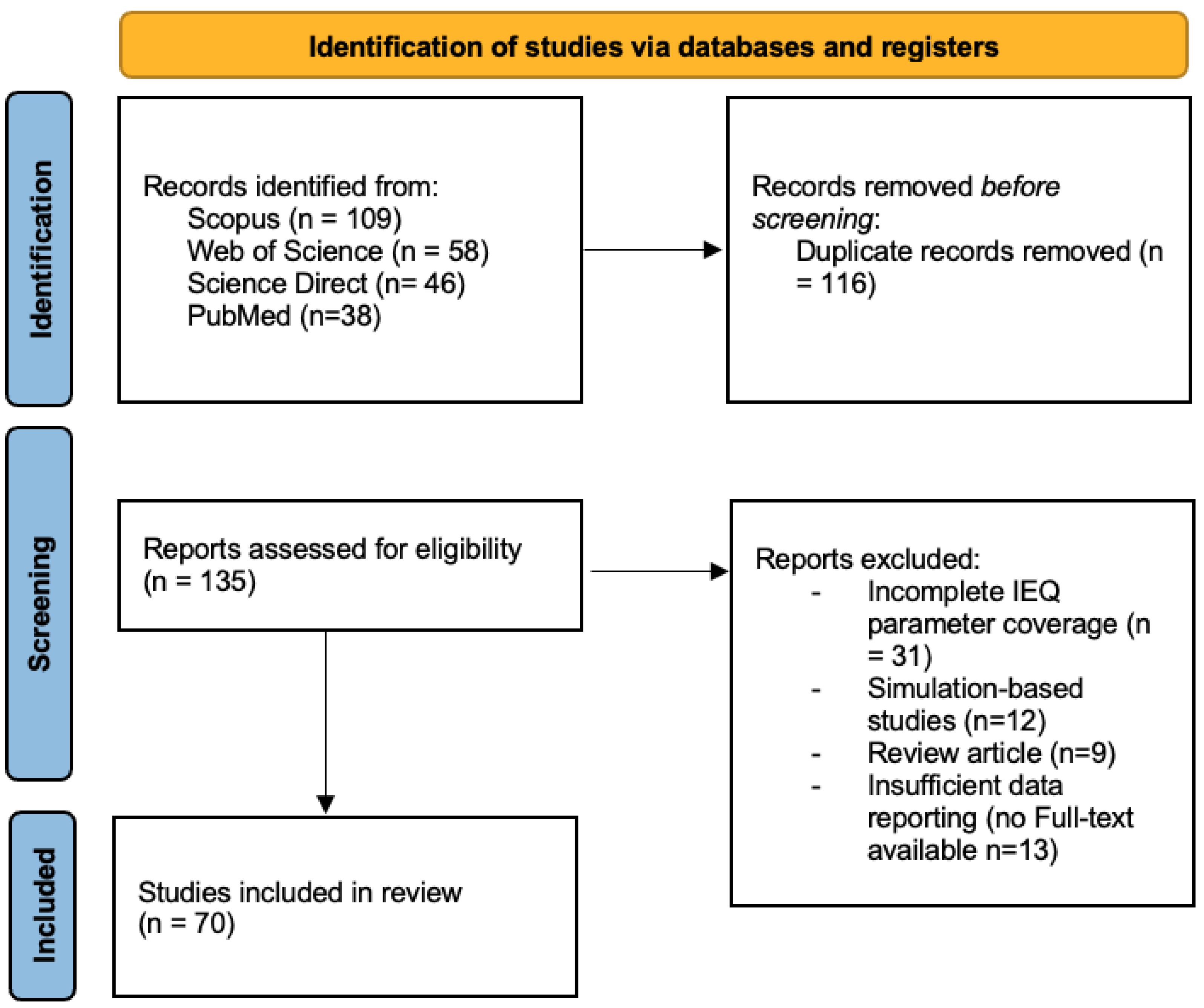
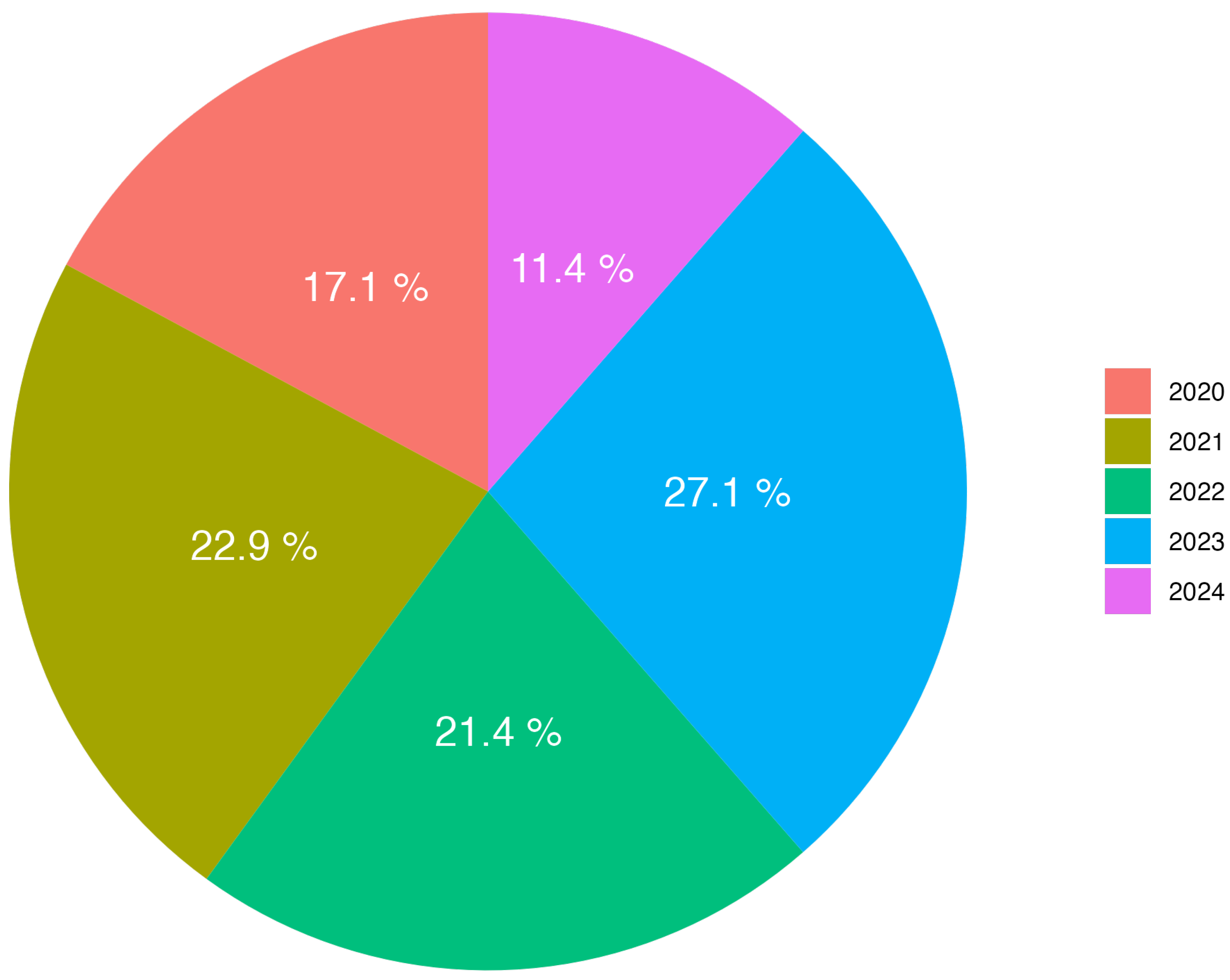
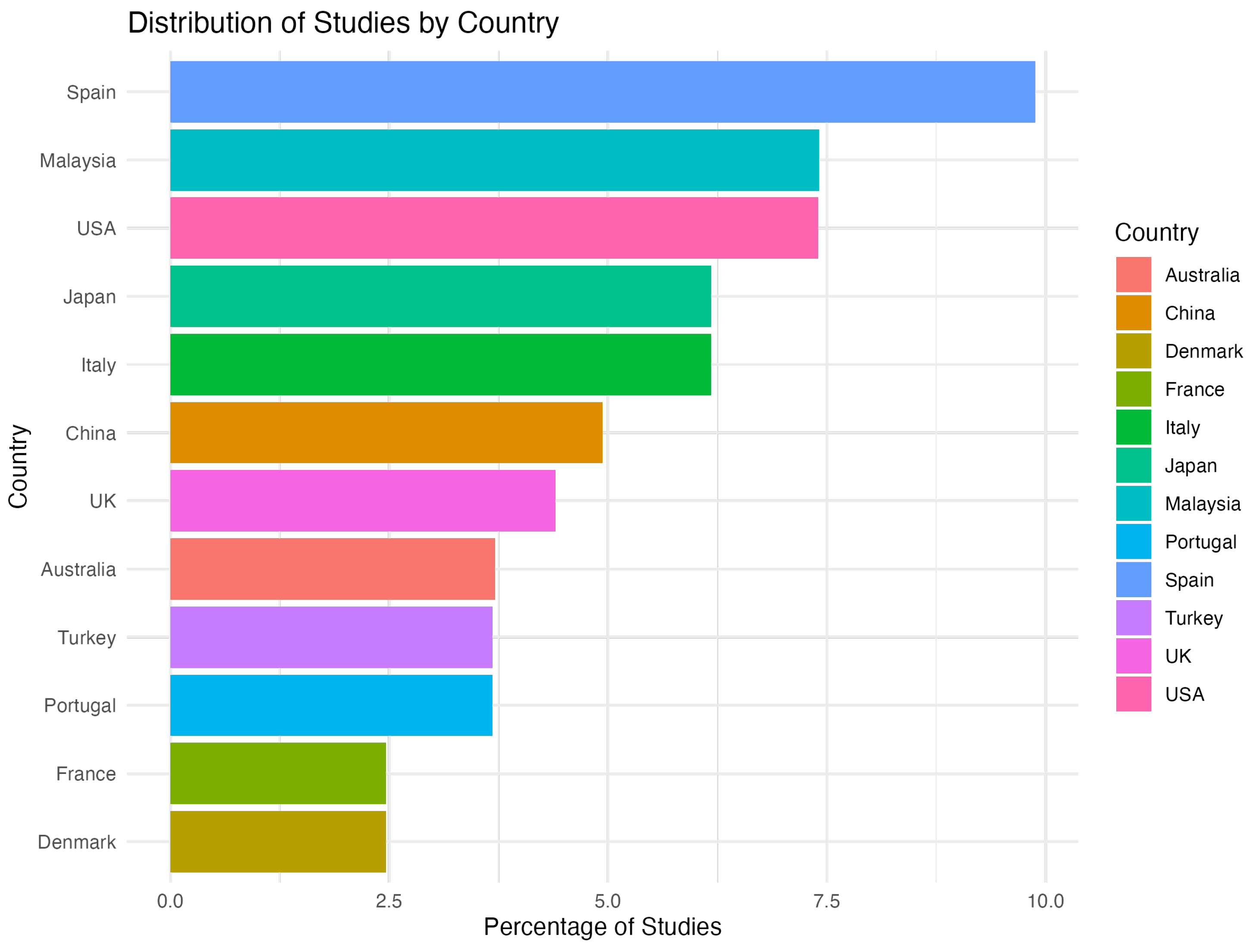
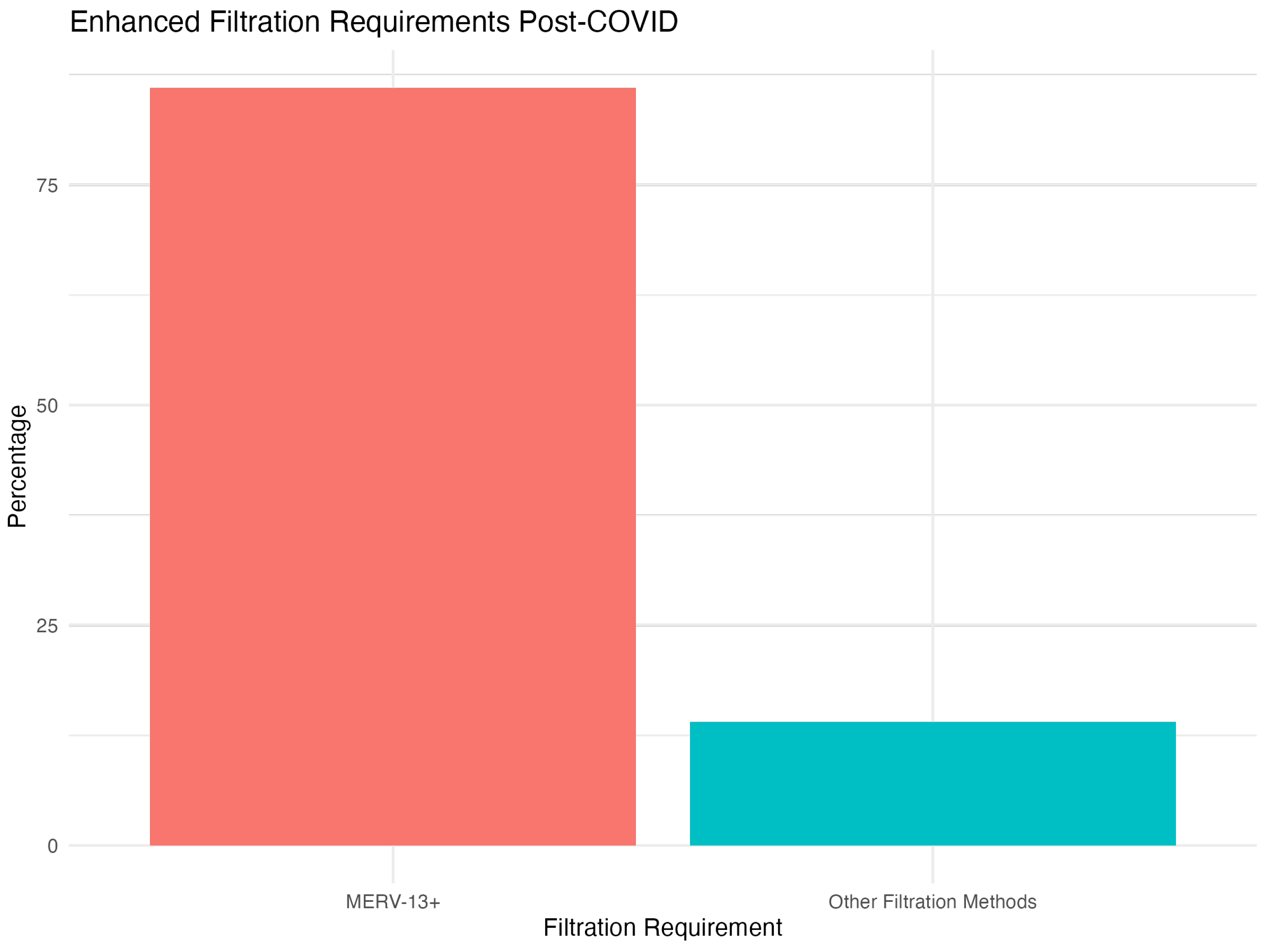
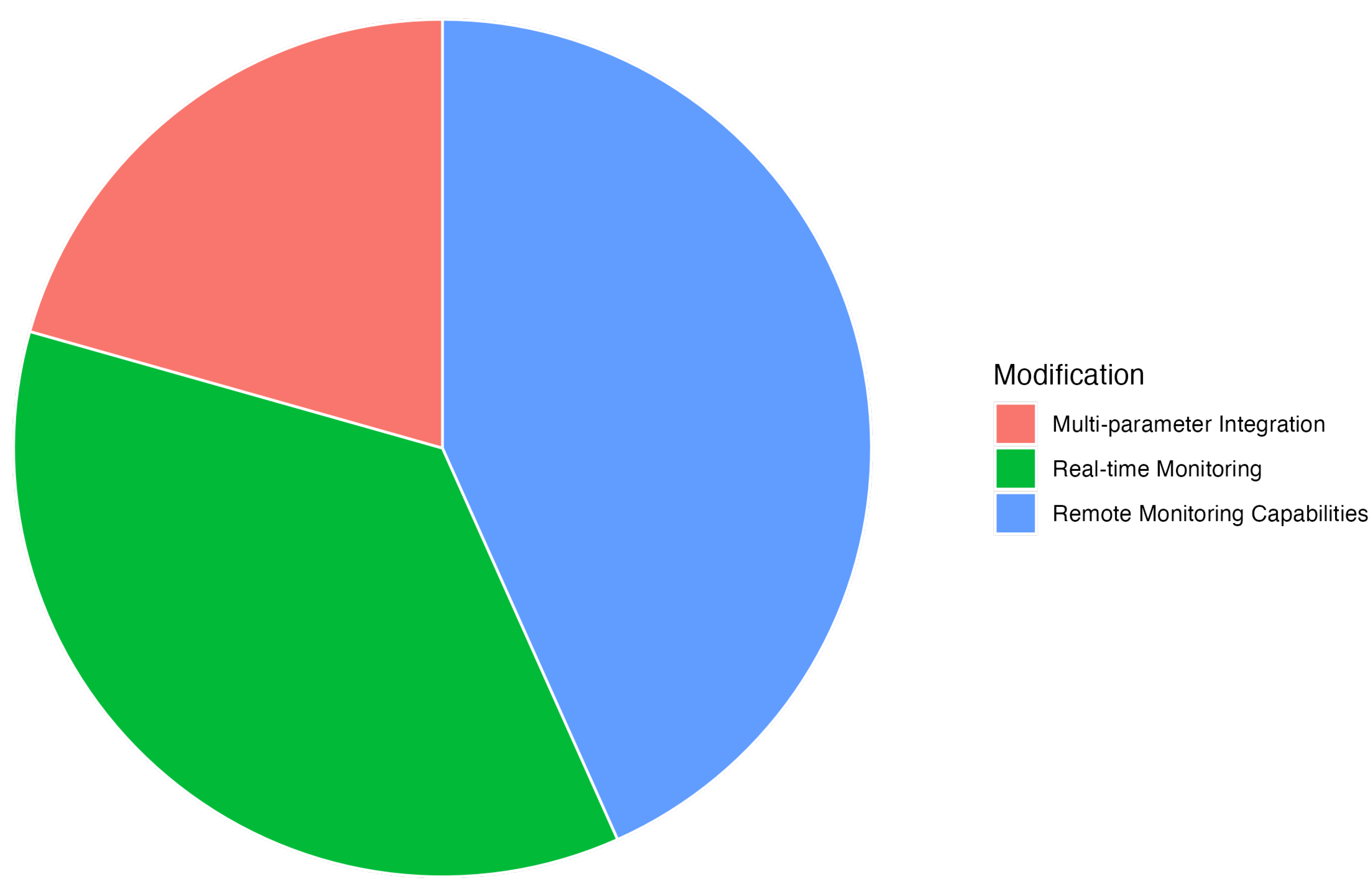
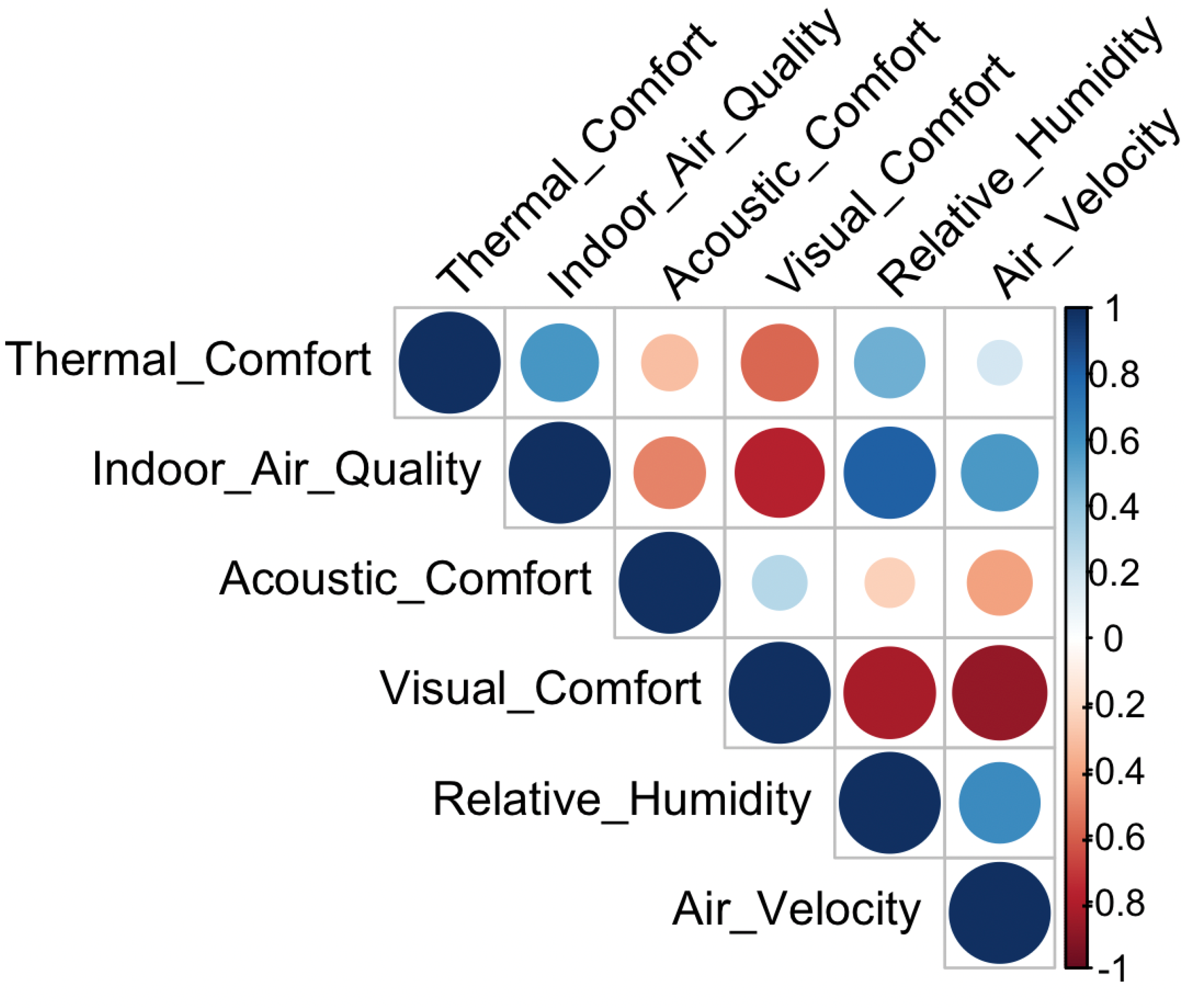
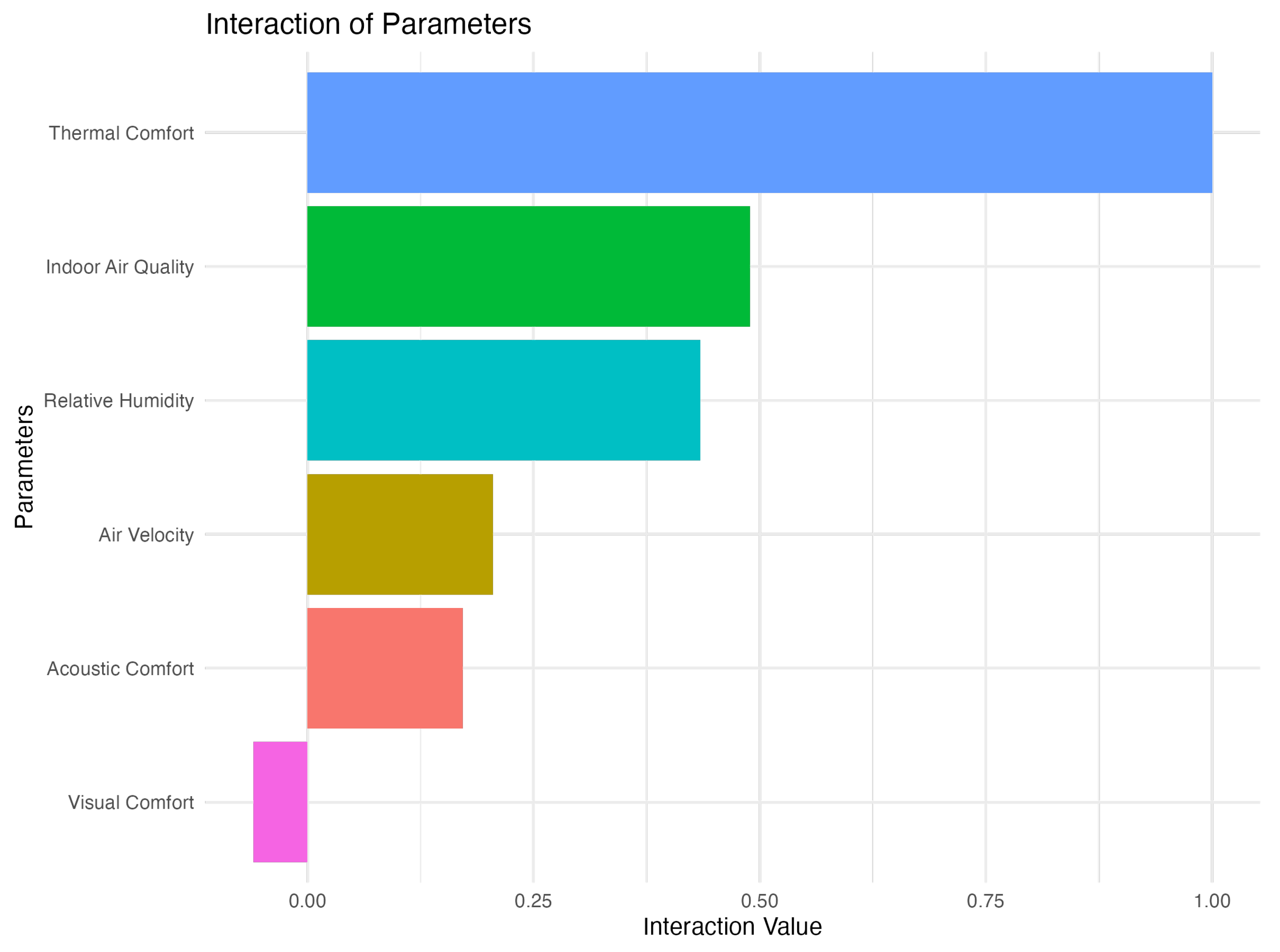
| Reference | Authors | Year | School Type | Parameters | Key Findings |
|---|---|---|---|---|---|
| [15] | Nowak-Dzieszko et al. | 2024 | Primary | CO2, IAQ | Natural ventilation modeling showed poor efficiency in classrooms |
| [16] | Yuan and Ryu | 2022 | Nursery | Temperature, CO2 | 73% of classrooms failed to meet thermal comfort standards |
| [17] | Papadopoulos et al. | 2022 | University | Temperature, IAQ | CFD analysis revealed spatial phenomena’s impact on comfort |
| [18] | Pichlhöfer et al. | 2021 | School | IAQ, CO2, PM | Plant-based solutions improved multiple IAQ parameters |
| [19] | Alonso et al. | 2021 | Primary | Temperature, CO2 | COVID-19 ventilation measures reduced CO2 by 300–400 ppm |
| [10] | Laouadi et al. | 2024 | K-12 | Temperature | Health-based overheating limit criteria were developed |
| [11] | Eichholtz et al. | 2024 | Primary | CO2, PM2.5 | Post-COVID ventilation measures improved IAQ significantly |
| [20] | Wieser et al. | 2023 | High | Temperature | Temperature variations of 6–7 °C from comfort standards |
| [21] | Haddad et al. | 2021 | Secondary | CO2, VOCs | DCV system reduced peak CO2 from 2418 to 1335 ppm |
| [12] | Barreira et al. | 2024 | Kindergarten | Temperature, CO2 | Temperature range 10–27 °C affected by building characteristics |
| [22] | Hu et al. | 2023 | University | VOCs, Odor | Average of 30.7% of TVOC emissions were human-related |
| [23] | Amoatey et al. | 2023 | High | IEQ | Sound levels exceeded 60 dB critical limit |
| [24] | Selicati & Cardinale | 2023 | Public | IAQ, IEQ | Smart maintenance improved building performance |
| [25] | Sekartaji et al. | 2023 | Junior High | Energy, IEQ | AC installation affected comfort and energy use |
| [26] | Leccese et al. | 2020 | University | Lighting | New lighting quality assessment method was developed |
| [27] | Lazović et al. | 2022 | School | Temperature | Energy efficiency significantly impacted indoor air temperature |
| [28] | Run et al. | 2023 | University | Temperature, IAQ | Renovation improved thermal comfort conditions |
| [29] | Baba et al. | 2023 | School | Temperature | Desert climate required specific adaptation strategies |
| [30] | Deshko et al. | 2020 | University | CO2 | Natural ventilation rates varied 0.4–0.75 h−1 |
| [31] | Mustapha et al. | 2024 | Secondary | Temperature | Thermal comfort prediction methods were developed |
| [32] | Wu et al. | 2024 | University | IAQ, Temperature | Dormitory ventilation required specific strategies |
| [33] | Babich et al. | 2023 | School | IAQ, Temperature | Different comfort standards’ effectiveness was compared |
| [34] | Mohamed et al. | 2023 | School | Energy, TC | Aerogel glazing improved thermal performance |
| [35] | Mocová & Mohelníková | 2021 | School | CO2, IAQ | Renovation affected ventilation performance |
| [36] | Tang et al. | 2020 | Mixed | IEQ | Post-occupancy evaluation revealed comfort issues |
| [37] | Oliveira & Corvacho | 2021 | School | Temperature | Thermal comfort near glazing was analyzed |
| [38] | Kuurola et al. | 2023 | School/Daycare | IAQ | Night ventilation reduction impacts were studied |
| [39] | Hwang et al. | 2022 | Primary | IAQ, Temperature | Energy use and academic performance were optimized |
| [40] | Ateş & Khameneh | 2023 | University | CO2, Temperature | Occupancy significantly affected IAQ |
| [5] | Mori et al. | 2022 | School | IAQ, Temperature | COVID-19 changed ventilation patterns |
| [6] | Miranda et al. | 2022 | University | IAQ, Temperature | Exam room ventilation requirements were analyzed |
| [41] | Al-Ashwal et al. | 2023 | High | Lighting | Daylighting performance assessment methods |
| [42] | Auer et al. | 2020 | School | IEQ | Technology integration assessment for comfort |
| [13] | Hernandez & Cañas | 2024 | School | Multiple IEQ | IoT-based monitoring solution was developed |
| [43] | Barbosa et al. | 2020 | School | IEQ, Energy | Mediterranean climate comfort analysis |
| [44] | Paschoalin Filho et al. | 2022 | University | IAQ | Environmental conditions’ impact on performance |
| [45] | Asdrubali et al. | 2021 | School | Energy | Environmental payback time assessment |
| [46] | Zhou et al. | 2023 | Primary/Middle | Ventilation | Negative pressure ventilation effectiveness |
| [47] | Pollozhani et al. | 2024 | School | IAQ, Health | Ventilation strategies’ health impacts |
| [48] | Catalina et al. | 2024 | School | IAQ, Temperature | Decentralized ventilation performance |
| [49] | de la Hoz-Torres et al. | 2021 | University | IAQ, Acoustics | Natural ventilation acoustic impacts |
| [50] | Lala et al. | 2022 | Primary | Temperature | Hot-climate thermal comfort adaptation |
| [51] | Dudzińska & Kisilewicz | 2021 | School | Temperature | Passive cooling strategies were assessed |
| [52] | Susan & Prihatmanti | 2021 | School | Lighting | Heritage building adaptation methods |
| [53] | Mohamed et al. | 2021 | Primary | Temperature, IAQ | UK schools’ overheating assessment |
| [54] | Deng et al. | 2021 | Elementary | IAQ, Temperature | Seasonal effects on student absenteeism |
| [55] | Yao et al. | 2023 | Secondary | Thermal Comfort, Learning Performance | Study on student performance and thermal comfort |
| [56] | Torriani et al. | 2023 | Primary | Indoor Air Quality, Thermal Comfort | Impact of perceived control on thermal comfort and air quality in schools |
| [48] | Catalina et al. | 2024 | Secondary | Decentralized Ventilation, Indoor Air Quality | Impact of indoor environmental quality in Romanian schools |
| [57] | Ogbuagu et al. | 2023 | Primary | Diffused Ceiling Ventilation, Indoor Air Quality | Performance of diffuse ceiling ventilation in classrooms |
| [50] | Lala et al. | 2022 | Primary | Adaptive Thermal Behaviors, Indoor Thermal Comfort | Thermal comfort and adaptive behaviors of students in primary schools |
| [58] | Norazman et al. | 2021 | Secondary | Indoor Environmental Quality, Comfort Level | Indoor environmental quality towards classroom comfort level in Malaysian schools |
| [59] | Xia et al. | 2020 | Primary | Indoor Thermal Comfort, Field Study | Thermal comfort studies in primary school classrooms |
| [60] | Heracleous | 2020 | Secondary | Thermal Comfort, Natural Ventilation | Thermal comfort models in educational buildings in east Mediterranean region |
| [61] | Azli et al. | 2022 | Secondary | Thermal Comfort, Learning Performance | Thermal sensation votes and students’ performance in naturally ventilated classrooms |
| [62] | Shrestha et al. | 2022 | Secondary | CO2 Emission, Natural Ventilation | CO2 concentration in Nepalese school buildings during summer |
| [63] | Jiang et al. | 2020 | Secondary | Adaptive Thermal Comfort, Cold Climate | Thermal comfort study in school classrooms in northwest China |
| [64] | Sadrizadeh et al. | 2022 | Secondary | Indoor Air Quality, Energy Use | Indoor air quality and health in schools: a critical review |
| [65] | Sivri et al. | 2020 | Primary | Airborne Bacteria, Air Quality | Indoor air quality in Istanbul public schools |
| [66] | Hosamo et al. | 2022 | Secondary | Thermal Comfort, Multi-Objective Optimization | Optimization of energy consumption and thermal comfort using machine learning |
| [67] | Alzahrani et al. | 2021 | Secondary | Teacher Performance, Thermal Comfort | Neural network analysis of teacher performance and thermal comfort |
| [68] | Al-Khatri et al. | 2022 | Secondary | Thermal Comfort, Classroom Environment | User response to indoor thermal environment in female high school buildings |
| [69] | van der Walt et al. | 2024 | Primary | Indoor Air Quality, Learning Conditions | Temperature and CO2 in South African classrooms |
| [70] | Miao et al. | 2023 | Primary | Indoor Environment, Machine Learning | Predicting air quality and thermal comfort using machine learning in schools |
| [71] | Kükrer | 2021 | Secondary | Thermal Comfort, Multipurpose School Design | Impact of design and operational strategies on thermal comfort in school buildings |
| [9] | Elbellahy et al. | 2024 | Secondary | Daylighting, Thermal Comfort | Evaluation of daylighting and thermal comfort in Saudi Arabian educational buildings |
| [72] | Peng et al. | 2020 | Primary | Low Energy Technologies, Indoor Comfort | Improving indoor environment performance with low-energy systems in school buildings |
| [73] | Mujan et al. | 2021 | Secondary | Environmental Quality Index, IoT | Development of environmental quality index using low-cost monitoring in schools |
| [74] | Campano-Laborda et al. | 2020 | Secondary | Indoor Air Quality, Health Symptoms | Perception of indoor comfort and symptomatology in educational buildings |
| [75] | Khambadkone et al. | 2022 | Secondary | Thermal Comfort, Climate | Thermal comfort evaluation in architectural studio classrooms in India |
| [76] | Lala et al. | 2022 | Secondary | Deep Learning, Thermal Comfort | Prediction of thermal comfort and student preferences in winter through machine learning |
| [77] | Ma et al. | 2020 | Primary | Temperature, IAQ | Winter thermal comfort analysis |
| School Type | Number of Schools | Number of Classrooms | Avg. Classrooms/School | % of Total Schools |
|---|---|---|---|---|
| Kindergarten | 13 | 448 | 34.46 | 23.64% |
| University | 37 | 3055 | 82.57 | 67.27% |
| Vocational | 2 | 0 | N/A | 3.64% |
| Primary | 1 | 0 | N/A | 1.82% |
| Secondary | 2 | 6695 | 3347.50 | 3.64% |
| Parameter | Thermal Comfort | Indoor Air Quality | Acoustic Comfort | Visual Comfort | Relative Humidity | Air Velocity |
|---|---|---|---|---|---|---|
| Thermal Comfort | 1.000 | 0.489 | 0.172 | −0.060 | 0.434 | 0.205 |
| Indoor Air Quality | 0.489 | 1.000 | 0.090 | −0.123 | 0.649 | 0.418 |
| Acoustic Comfort | 0.172 | 0.090 | 1.000 | 0.259 | 0.278 | 0.076 |
| Visual Comfort | −0.060 | −0.123 | 0.259 | 1.000 | −0.139 | −0.294 |
| Relative Humidity | 0.434 | 0.649 | 0.278 | −0.139 | 1.000 | 0.471 |
| Air Velocity | 0.205 | 0.418 | 0.076 | −0.294 | 0.471 | 1.000 |
Disclaimer/Publisher’s Note: The statements, opinions and data contained in all publications are solely those of the individual author(s) and contributor(s) and not of MDPI and/or the editor(s). MDPI and/or the editor(s) disclaim responsibility for any injury to people or property resulting from any ideas, methods, instructions or products referred to in the content. |
© 2025 by the authors. Licensee MDPI, Basel, Switzerland. This article is an open access article distributed under the terms and conditions of the Creative Commons Attribution (CC BY) license (https://creativecommons.org/licenses/by/4.0/).
Share and Cite
Di Loreto, S.; Falone, M.; Pierantozzi, M.; Montelpare, S. Field Measurements of Indoor Environmental Quality in School Buildings Post-COVID-19: Systematic Review. Appl. Sci. 2025, 15, 5692. https://doi.org/10.3390/app15105692
Di Loreto S, Falone M, Pierantozzi M, Montelpare S. Field Measurements of Indoor Environmental Quality in School Buildings Post-COVID-19: Systematic Review. Applied Sciences. 2025; 15(10):5692. https://doi.org/10.3390/app15105692
Chicago/Turabian StyleDi Loreto, Samantha, Matteo Falone, Mariano Pierantozzi, and Sergio Montelpare. 2025. "Field Measurements of Indoor Environmental Quality in School Buildings Post-COVID-19: Systematic Review" Applied Sciences 15, no. 10: 5692. https://doi.org/10.3390/app15105692
APA StyleDi Loreto, S., Falone, M., Pierantozzi, M., & Montelpare, S. (2025). Field Measurements of Indoor Environmental Quality in School Buildings Post-COVID-19: Systematic Review. Applied Sciences, 15(10), 5692. https://doi.org/10.3390/app15105692








